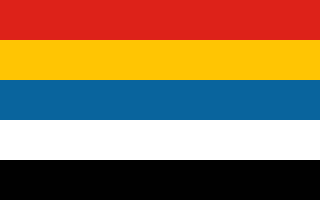 W
WChina, officially known as the Republic of China (ROC), was a country in East Asia based in mainland China from 1912 to 1949, prior to the relocation of its government to Taiwan as a result of the Chinese Civil War. At a population of 541 million in 1949, it was the world's most populous country. Covering 11.4 million square kilometres, it consisted of 35 provinces, 1 special administrative region, 2 regions, 12 special municipalities, 14 leagues, and 4 special banners. This period is often referred to as the Republican Era in mainland China or the Mainland Period in Taiwan.
 W
WCelebrations of the 100th anniversary of the founding of the Republic of China were held on 10 October 2011, on the 100th anniversary of the Xinhai Revolution. It was celebrated in both Taiwan (ROC) and mainland China (PRC), but the connotation and significance of the celebration varied between the two.
 W
WThe 1911 Revolution, or Xinhai Revolution, ended China's last imperial dynasty, the Manchu-led Qing dynasty, and led to the establishment of the Republic of China. The revolution culminated a decade of agitation, revolts, and uprisings. Its success marked the collapse of the Chinese monarchy, the end of 2,132 years of imperial rule and 276 years of the Qing dynasty, and the beginning of China's early republican era.
 W
WThe Age of Openness: China Before Mao is a 2008 book by historian Frank Dikötter. It provides an account of the Republican era of Chinese history, spanning from the early 20th century to the Communist Party takeover in 1949. In it, Dikötter describes a period of unprecedented openness during which China was actively pursuing engagement with the world, as evidenced by what Dikötter described as a pluralistic intellectual environment, thriving open markets and economic growth, and expanded liberties and rule of law.
 W
WAnti-Communist Hero was the title given by the Republic of China government in Taiwan to defectors from mainland China during the Korean War and the Cold War. The title was first given on 23 January 1954 to 14,000 prisoners of war from the People's Volunteer Army who defected to Taiwan. Most of them were former Kuomintang soldiers taken captive by the communist forces during the Chinese Civil War. The defectors were tattooed with anti-communist slogans and the KMT flag before coming to Taiwan. The memorial day World Freedom Day (一二三自由日) was founded in their honor.
 W
WThe Army and Navy Marshal stronghold was the government that led the Southern Government after the defeat of the Second Constitutional Protection Movement. The presidential system was replaced by a one-party military regime under the principle of Party-State.
 W
WThe Beiyang government, officially the Republic of China, also sometimes spelled Peiyang Government or the First Republic of China, refers to the government of the Republic of China which sat in its capital Peking (Beijing) between 1912 and 1928. It was internationally recognized as the legitimate Chinese government during that time.
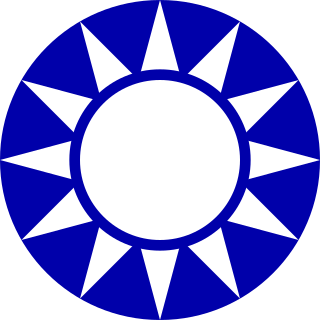 W
WThe Blue Shirts Society (藍衣社), also known as the Society of Practice of the Three Principles of the People, the Spirit Encouragement Society and the China Reconstruction Society, was a secret ultranationalist faction that modeled Italian fascists in the Kuomintang.
 W
WThe Republic of China calendar or Minguo calendar is one of the calendars used in the Greater China area. The calendar uses 1912, the year of the establishment of the Republic of China (ROC), as the first year. The term "minguo" simply means "republic". The ROC calendar follows the tradition of using the sovereign's era name and year of reign, as did previous Chinese dynasties. Months and days are numbered according to the Gregorian calendar. The ROC calendar has been in wide use in the ROC since 1912, including in early official documents.
 W
WThe century of humiliation, also known as the hundred years of national humiliation, is the term used in China to describe the period of intervention and subjugation of the Qing dynasty and the Republic of China by Western powers and Japan from 1839 to 1949.
 W
WChina Airlines Flight 140 was a regularly scheduled passenger flight from Chiang Kai-shek International Airport to Nagoya Airport in Nagoya, Japan.
 W
WThe Chinese Maritime Customs Service was a Chinese governmental tax collection agency and information service from its founding in 1854 until it split in 1949 into services operating in the Republic of China on Taiwan, and in the People's Republic of China. From its foundation in 1854 until the collapse of the Qing dynasty in 1911, the agency was known as the Imperial Maritime Customs Service.
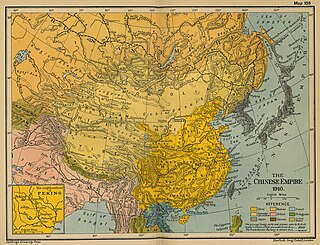 W
WConcessions in China were a group of concessions that existed during the late Imperial China and the Republic of China, which were governed and occupied by foreign powers, and are frequently associated with colonialism and imperialism.
 W
WThe Ding Xian Experiment during the Republican period of Chinese history was a project in Rural Reconstruction sponsored by James Yen's Mass Education Movement (MEM) 中华平民教育促进会 in Ding Xian, Hebei, some 200 miles south of Beijing.
 W
WDing Shujing was the first Chinese leader of the Chinese YWCA, holding office from 1925 to 1936.
 W
WZhang Dinghuang ; 1895–1986), also known as Zhang Fengju was a Chinese-American antiquarian, linguist, literary critic, poet, and translator. He was born in Nanchang and an expert in antique manuscripts. Zhang was a supporting but key figure of the rich 20th century Chinese literary movements.
 W
WAfter the fall of the Qing Dynasty in 1912, China underwent a period of instability and disrupted economic activity. During the Nanjing decade (1927–1937), China advanced in a number of industrial sectors, in particular those related to the military, in an effort to catch up with the west and prepare for war with Japan. The Second Sino-Japanese War (1937–1945) and the following Chinese civil war caused the retreat of the Republic of China and formation of the People's Republic of China.
 W
WThe first encirclement campaign against the Honghu Soviet was an encirclement campaign launched by the Chinese Nationalist Government that was intended to destroy the communist Honghu Soviet and its Chinese Red Army in the local region. It was responded by the Communists' first counter-encirclement campaign at Honghu Soviet, also called by the communists as the first counter-encirclement campaign at Honghu Revolutionary Base, in which the local Chinese Red Army successfully defended their soviet republic in the southern Hubei and northern Hunan provinces against the Nationalist attacks from early December 1930 to the end of January 1931.
 W
WThe third encirclement campaign against the Honghu Soviet was an encirclement campaign launched by the Chinese Nationalist Government that was intended to destroy the communist Honghu Soviet and its Chinese Red Army in the local region. It was responded by the Communists' third counter-encirclement campaign at Honghu Soviet, also called by the communists as the third counter-encirclement campaign at Honghu Revolutionary Base, in which the local Chinese Red Army successfully defended their soviet republic in the southern Hubei and northern Hunan provinces against the Nationalist attacks from early September 1931 to 30 May 1932.
 W
WThe encirclement campaign against the Hunan–Western Hubei Soviet was an encirclement campaign launched by the Chinese Nationalist Government that was intended to destroy the communist Hunan–Western Hubei Soviet and its Chinese Red Army in the local region. The Communists' responded by launching the Counter-encirclement campaign at Hunan–Western Hubei Soviet, also called by the communists as the Counter-encirclement campaign at Hunan–Western Hubei Revolutionary Base, in which the Nationalist force defeated the local Chinese Red Army and overran the communist base in the southern Hubei and Hunan provinces from November 1930 to January 1931. Since the bulk of the fighting was fought at the second stage of the campaign, concentrated at the heart of the communist base, the Honghu region of Jingzhou, the campaign is therefore also frequently referred as the Fourth encirclement campaign against Honghu Soviet and the Fourth Counter-encirclement campaign at Honghu Revolutionary Base by the communists, or Fourth Counter-encirclement campaign at Honghu Soviet for short.
 W
WThe encirclement campaign against Hunan-Hubei-Sichuan-Guizhou Soviet was a series of battles launched by the Chinese Nationalist Government that was intended to destroy communist Hunan-Hubei-Sichuan-Guizhou Soviet and its Chinese Red Army in the local region. It was responded by the Communists' Counter-encirclement campaign at Hunan-Hubei-Sichuan-Guizhou Soviet, also called by the communists as the Counter-encirclement campaign at Hunan-Hubei-Sichuan-Guizhou Revolutionary Base, in which the local Chinese Red Army successfully defended their soviet republic in the southern Jiangxi province against the Nationalist attacks from February, 1935 to August, 1935.
 W
WFive Races Under One Union was one of the major principles upon which the Republic of China was founded in 1911 at the time of the Xinhai Revolution. Its central tenet was the harmonious existence under one nation of what were considered the five major ethnic groups in China: the Han, the Manchus, the Mongols, the Hui (Uyghurs), and the Tibetans.
 W
WThe Formosa Resolution of 1955 was a joint resolution passed by the U.S. Senate and signed by U.S. President Dwight D. Eisenhower on January 29, 1955, to counteract the threat of an invasion of Taiwan by the People’s Republic of China (PRC). The resolution gave the U.S. President the authority “to employ the Armed Forces of the United States as he deems necessary for the specific purpose of securing and protecting Formosa and the Pescadores against armed attack [by the Communists]”.
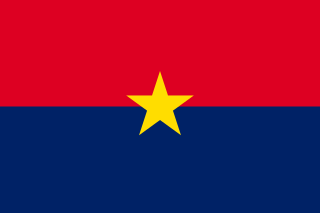 W
WThe Fujian People's Government is the common name for the People's Revolutionary Government of the Republic of China (1933–1934), also known as the Fujian People's Government, was a short-lived anti-Kuomintang government in the Chinese Republic's Fujian Province. The rebellion that led to its formation and its collapse are known as the Fujian Incident or Fujian Rebellion.
 W
WThe Government of the Republic of China was the government that led the Second Constitutional Protection Movement. The military junta was replaced by a presidential system.
 W
WThe Guangdong Military Government of the Republic of China was a military government established in Guangdong on November 9, 1911 after the success of the Wuchang Uprising. The government is a predecessor to the Republic of China. Its forces were led by Chen Jiongming.
 W
WLillian Katherine Haass was a YWCA worker in Shanghai, China, between 1914 and 1945. She led efforts to educate Chinese women to become leaders among industrial workers.
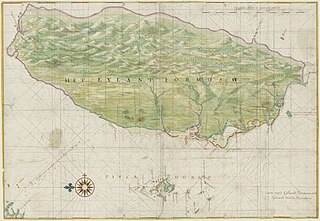 W
WAs a result of the surrender and occupation of Japan at the end of World War II, the island of Taiwan was placed under the governance of the Republic of China (ROC), ruled by the Kuomintang (KMT), on 25 October 1945. Following the February 28 massacre in 1947, martial law was declared in 1949 by the Governor of Taiwan Province, Chen Cheng, and the ROC Ministry of National Defense. Following the end of the Chinese Civil War in 1949, the ROC government retreated from the mainland as the Communists proclaimed the establishment of the People's Republic of China. The KMT retreated to Taiwan and declared Taipei the temporary capital of the ROC. For many years, the ROC and PRC each continued to claim in the diplomatic arena to be the sole legitimate government of "China". In 1971, the United Nations expelled the ROC and replaced it with the PRC.
 W
WThe Huaxinghui, commonly translated as the China Revival Society or China Arise Society, was founded by Huang Xing and Zhang Shizhao on 15 February 1904 with the election of Huang Xing as its president, in Changsha of Hunan for the explicit political goal of overthrowing the Qing dynasty and establishing a democratic and free country. Many of its members later became key figures of the Tongmenghui.
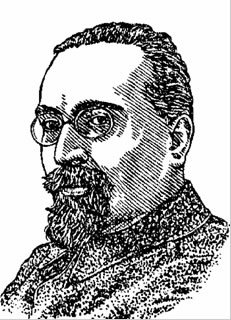 W
WThe Karakhan Manifesto was a statement of Soviet policy toward China dated 25 July 1919. It was issued by Lev Karakhan, deputy commissioner for foreign affairs for Soviet Russia. The manifesto offered to relinquish various rights Russia had obtained by treaty in China, including extraterritoriality, economic concessions, and Russia's share of the Boxer indemnity. These and similar treaties had been denounced by Chinese nationalists as "unequal." The manifesto created a favorable impression of Russia and Marxism among Chinese. It was often contrasted with the Treaty of Versailles (1919), which granted Shandong to Japan.
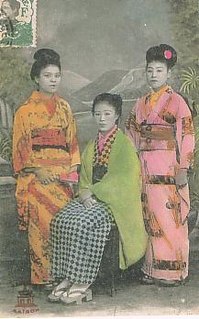 W
WKarayuki-san (唐行きさん) was the name given to Japanese girls and women in the late 19th and early 20th centuries who were trafficked from poverty-stricken agricultural prefectures in Japan to destinations in East Asia, Southeast Asia, Siberia, Manchuria, British India, and Australia, to serve as sex workers.
 W
WThe Kuomintang (KMT), also known as the Chinese Nationalist Party, is a political party in the Republic of China, initially on the Chinese mainland and in Taiwan after 1949. Originally the sole ruling party under the Dang Guo system, the KMT is currently the largest opposition party in the Legislative Yuan. In Taiwanese politics, the KMT primarily competes with the rival Democratic Progressive Party (DPP). The KMT opposes de jure Taiwan independence and Chinese unification under "One Country, Two Systems", instead favoring cross-strait relations with the People's Republic of China (PRC) and maintaining Taiwan's status quo under the Constitution of the Republic of China. The current chairman is Eric Chu. The KMT is one of two major historical contemporary parties in China, the other being the Chinese Communist Party.
 W
WThe Kuomintang in Burma were Chinese Nationalist troops that fled from Communist-controlled Red China to Burma in 1950 after their defeat by the Communists in the Chinese Civil War. Officially the Yunnan Anti-communist National Salvation Army, the Chinese Nationalist troops in Burma were commanded by General Li Mi. It attempted several incursions into Yunnan in the early 1950s, only to be pushed back into Burma each time by the Chinese Communist Party's People's Liberation Army.
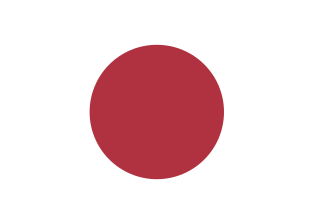 W
WThe Kwantung Leased Territory, was a leased territory of the Empire of Japan in the Liaodong Peninsula from 1905 to 1945.
 W
WThe Landing Operation on Hainan Island, also known as the Battle of Hainan Island (海南岛战役) or the Hainan Campaign (海南战役) for short, was a series of battles fought between the Kuomintang (Nationalists) and the People's Liberation Army (PLA) for the island of Hainan during the resumption of the Chinese Civil War in the post-World War II period, and resulted in a Communist victory.
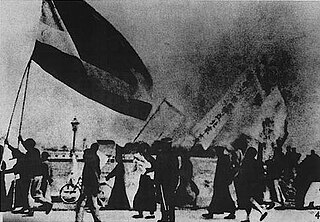 W
WThe May Fourth Movement was a Chinese anti-imperialist, cultural, and political movement which grew out of student protests in Beijing on 4 May 1919.
 W
WThe Mukden Incident, or Manchurian Incident, known in Chinese as the 9.18 Incident (九・一八), was a false flag event staged by Japanese military personnel as a pretext for the 1931 Japanese invasion of Manchuria.
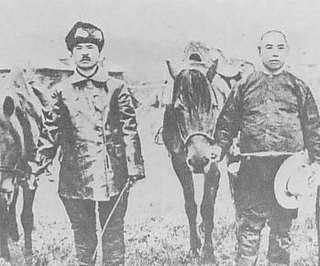 W
WThe Nakamura Incident refers to the extrajudicial killing of Imperial Japanese Army Captain Shintarō Nakamura and three others, on 27 June 1931 by Chinese soldiers in Manchuria.
 W
WThe Nanjing decade is an informal name for the decade from 1927 to 1937 in the Republic of China. It began when Nationalist Generalissimo Chiang Kai-shek took Nanjing from Zhili clique warlord Sun Chuanfang halfway through the Northern Expedition in 1927. Chiang declared it to be the national capital despite the existence of a left-wing Nationalist government in Wuhan. The Wuhan faction gave in and the Northern Expedition continued until the Beiyang government in Beijing was overthrown in 1928. The decade ended with the outbreak of the Second Sino-Japanese War in 1937 and the retreat of the Nationalist government to Wuhan. GDP growth averaged 3.9 per cent a year from 1929 to 1941 and per capita GDP about 1.8 per cent.
 W
WThe Nanking Incident occurred in March 1927 during the capture of Nanjing by the National Revolutionary Army (NRA) in their Northern Expedition. Foreign warships bombarded the city to defend foreign residents against rioting and looting. Several ships were involved in the engagement, including vessels of the Royal Navy and the United States Navy. Marines and sailors were also landed for rescue operations. Both Nationalist and Communist soldiers within the NRA participated in the rioting and looting of foreign-owned property in Nanjing.
 W
WThe Nationalist government, officially the National Government of the Republic of China, also known as Second Republic of China but most commonly known simply as the Republic of China, refers to the government of the Republic of China between 1 July 1925 and 20 May 1948, led by the Kuomintang. The name derives from the Kuomintang's translated name "Nationalist Party".
 W
WThe Nine-Power Treaty (Japanese: Kyūkakoku Jōyaku or Nine-Power Agreement was a 1922 treaty affirming the sovereignty and territorial integrity of the Republic of China as per the Open Door Policy. The Nine-Power Treaty was signed on 6 February 1922 by all of the attendees to the Washington Naval Conference: Belgium, China, France, Great Britain, Italy, Japan, the Netherlands, Portugal, and the United States.
 W
WThe Northeast Flag Replacement refers to Zhang Xueliang's announcement on 29 December 1928 that all banners of the Beiyang government in Manchuria would be replaced with the flag of the Nationalist government, thus nominally uniting China under one government.
 W
WThe president of the Republic of China, unofficially known as the president of Taiwan, is the head of state of the Republic of China (ROC) and the commander-in-chief of the Republic of China Armed Forces.
 W
WProject National Glory or Project Guoguang was a military attempt by the Republic of China (ROC) Armed Forces in Taiwan to try to recapture Mainland China held by the People's Liberation Army in the newly established People's Republic of China (PRC). Preparatory operations began in 1961 and the project was abandoned in July 1972.
 W
WAfter victory in the Xinhai Revolution, the Nanjing Provisional Government of the Republic of China, led by Sun Yat-sen, framed the Provisional Constitution of the Republic of China, which was an outline of basic regulations with the qualities of a formal constitution.
 W
WThe Provisional Government of the Republic of China was a Chinese puppet state of the Empire of Japan that existed from 1937 to 1940 during the Second Sino-Japanese War. It had been formed largely on the initiative of Imperial Japanese Army commanders in north China, before securing approval from Japanese government authorities in Tokyo. Thus the Provisional Government had nominal authority in Japanese occupied zones in north China, while to the south the Central China Expeditionary Army established the Reformed Government of the Republic of China in 1938, which had authority in the Yangtze River area. Both essentially served as a local organ of the Japanese military authorities, due to the presence and extensive powers of Japanese advisors within the Provisional Government over native Chinese bureaucrats, and because it never made any attempt to secure international recognition, even from Japan.
 W
WThe Provisional Government of the Republic of China was a provisional government established during the Xinhai Revolution by the revolutionaries in 1912. After the success of the Wuchang uprising, revolutionary provincial assembly representatives held a conference in the district of Wuchang, China, which framed the organizational outline of the Provisional Government.
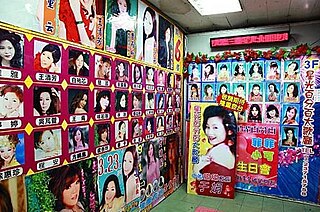 W
WA Red Envelope Club is a form of Cabaret in Taiwan that originated in Taipei in the 1960s as an imitation of Shanghai Cabaret. In these cabarets, female singers sing old Chinese songs from the 1920s to 1950s to mostly older men, many of whom were soldiers in General Chiang Kai-shek's Kuomintang army that fled Mainland China after the Chinese Civil War. The cabarets get their name from the fact that the audience gives the singers, who they appreciate, money in red envelopes. The remaining clubs are mostly located in the Ximending District of Taipei on Hankou Street, Emei Street, and Xining South Road.
 W
WThe Reformed Government of the Republic of China was a Chinese puppet state created by Japan that existed from 1938 to 1940 during the Second Sino-Japanese War. The regime had little authority or popular support, nor did it receive international recognition even from Japan itself, lasting only two years before it was merged with the Provisional Government into the Reorganized National Government of the Republic of China under Wang Jingwei. Due to the extensive powers of the Japanese advisors within the government and its own limited powers, the Reformed Government was not much more than an arm of the Japanese military administration.
 W
WThe Republican Party was a short-lived political party in the Republican era of China from 1912 to 1913.
 W
WThe Hsing Chung Hui, translated as the Revive China Society (興中會), the Society for Regenerating China, or the Proper China Society was founded by Sun Yat-sen on 24 November 1894 to forward the goal of establishing prosperity for China and as a platform for future revolutionary activities. It was formed during the First Sino-Japanese War, after a string of Chinese military defeats exposed corruption and incompetence within the imperial government of the Qing dynasty. The Revive China Society went through several political re-organizations in later years and eventually became the party known as the Kuomintang. As such, the contemporary Kuomintang considers its founding date to be the establishment of Revive China Society.
 W
WThe Society for Monarchical Constitutionalism, better known as the Royalist Party, was a monarchist political movement, party and militant organization of the early Republic of China. Although it largely lacked a firm structure, and consisted of loosely tied factions, the Royalist Party played a major role in Chinese politics during the 1910s. Supported by the Empire of Japan, members of the Royalist Party repeatedly conspired to restore the Chinese monarchy under the Qing dynasty, launched insurgencies, and attempted to enable the secession of Inner Mongolia and Manchuria from the rest of China.
 W
WThe Second Historical Archives of China is located on 309 East Zhongshan Rd., Nanjing, Jiangsu, China.
 W
WThe Taiwan Garrison Command was a secret police/state security body which existed under the Republic of China Armed Forces on Taiwan. The agency was established at the end of World War II, and operated throughout the Cold War. It was disbanded on 1 August 1992.
 W
WThis is a timeline of the Republic of China.
 W
WThe Wanpaoshan Incident was a minor dispute between Chinese and Korean farmers which occurred on 1 July 1931, before the Mukden Incident.
 W
WThe Wartime perception of the Chinese Communists in the United States and other Western nations before and during World War II varied widely in both the public and government circles. The Soviet Union, whose support had been crucial to the Party from its founding, also supported the Nationalist government in order to defeat Japan and protect Russian territory.
 W
WThe Western Hills Group was a faction of the Chinese Nationalist Party, or KMT, active in the 1920s. The faction was formed at a meeting of KMT leaders opposed to communist influence held at Biyun Temple in the Western Hills district of Beijing in November 1925. About half the KMT leadership attended the meeting. The group included Lin Sen, Ju Zheng, Zou Lu, and Xie Chi. In the three-way struggle for party leadership that followed the death of Sun Yat-sen, the group supported Hu Hanmin against leftist Wang Jingwei and centrist Chiang Kai-shek. Hu was Sun's intended successor, but he did not identify with the group.
 W
WThe Wuhan Nationalist government, also known as the Wuhan government, Wuhan regime, or Hankow government, was a government dominated by the left-wing of the Nationalist or Kuomintang (KMT) Party of China that was based in Wuhan from 5 December 1926 to 21 September 1927, led first by Eugene Chen, and later by Wang Jingwei.